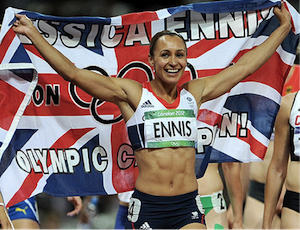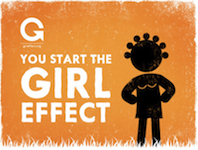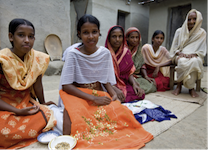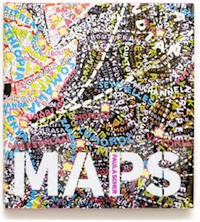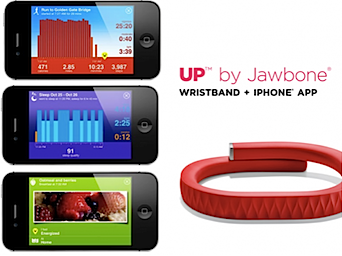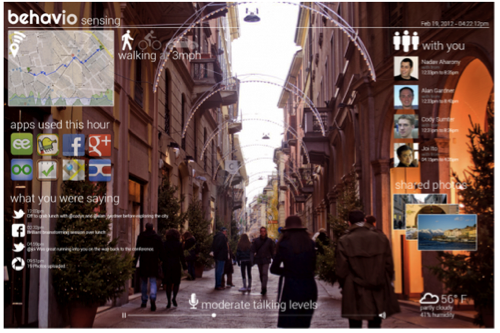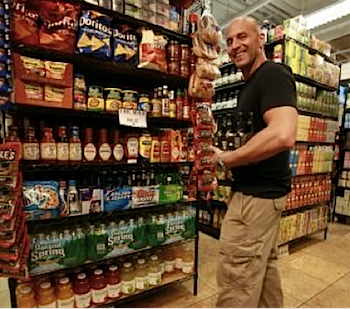The article is written by Greg Taylor, Director of Brand Provocation at Elmwood, London
The Monday morning after the Olympics drew to a spectacular close, London felt a little blue. We’d all been feasting on sport for a fortnight and had the wholesome equivalent of a hangover. Talk is now turning to performance and legacy. You can cut the medals tables in different ways – weighting by GDP, population or team size so different nations come out on top—but however you look at it, women were the real winners in 2012.
For the first time in the history of the games, every nation entered women competitors. Over a third of Team GB’s medals were won by women, including 11 golds. At the closing ceremony, Lord Coe spoke eloquently of ‘inspiring a generation’ and The Spice Girls briefly returned to remind us all of girl power. Is it time for women across the world to ‘zigazig ah’?
Photo: Jessica Ennis, British athlete, Olympics gold champion
Womenomics
Looking beyond sport, we’re now seeing brands harnessing technology to adopt a more ‘feminine’ style of interaction: conversational, collaborative, group-oriented and networked. As such, brand strategies are less about ‘shouting’ why you’re better than the competition. The argument even raises an important question: would we be in the economic mess we are today if it’d been Lehman Sisters rather than Brothers?
Some brands get it more than others. Nike’s brand truth is based on the power of unleashing human potential. It’s no surprise the company recognises the power of women in driving economic success and chooses to support them. The Nike Foundation is working on what they call ‘The Girl Effect’. Research suggests that one of the best ways to tackle global poverty was to invest in adolescent girls. When a girl in the developing world realises her potential, she isn’t the only one who escapes poverty—she brings her family, community, and country with her. In short, it’s about unleashing the unique potential of 600 million adolescent girls to end poverty for themselves and the world.
According to a study released by the World Bank, if girls in Nigeria were employed at the same rate as boys, they would add $13.9 billion to the country’s annual GDP. India loses $383 billion dollars in potential lifetime income because of teen pregnancy. As Nike says, this isn’t a social issue. It’s smart economics.
Photo: The Nike Foundation supporting «The Girl Effect»
It would be great to think we could apply such thinking to our own industry of brand design to generate economic success. Paula Scher of Pentagram, who despite being one of the most successful women in design and until recently the only female partner there, suggests in a recent interview with It’s Nice That that it’s not quite so straightforward. Scher believes that we need to judge a women’s career differently to a man’s. In the past, women tended to fall away after having children but this needn’t be the case. ‘Our career trajectories are completely different, although I think that is about to change. I see women now who’ve had children in their late 30s, but who come back at 50 years old and are spectacular.’
Pic. Paula Scher’s maps
The power of the purse and PIE
According to The Economist, we should ‘forget China, India, and the internet. Economic growth is driven by women’. This idea is supported in the US by figures like 85% of purchases and purchase influences are made by women. And 60% of personal wealth there is held by women. Yet 91% think advertisers don’t understand them! The opportunity exists for brands to make amends and to connect better with this financial powerhouse if they properly embrace what’s being called the Personal Information Economy (PIE). People who share their personal data online are now aware of how valuable it is to brands. In the Personal Information Economy, people will take control of their data, measure what they’re doing in their lives, and even monetise their personal information. And given that women pull the majority of the purse strings, brands need to better understand women and the data they collect on them through PIE.
One brand that is helping us to monitor our lives more effectively is UP. Developed by Jawbone and Fuseproject, this wristband and iPhone app continually charts its wearer’s movements during the day and during sleep. The wristband uploads data to the app on how much you are exercising, and reminds you to move by vibrating when it has not sensed movement for a while. UP also lets people create a food timeline. Users can take photos of each meal they consume using the iPhone’s camera, and 20 minutes later the app asks questions about how they feel. Over time, the app charts which foods have the most positive effects.
Pic. UP by Jawbone app
Others, like MIT’s Media Lab, are making use of our smartphones’ capabilities to turn us into walking data-collection machines. Its Behavio open source Android platform turns phones into smart sensors of people’s behaviours and surroundings—sensing how they use their phones, how they communicate with others and environmental factors such as sound, light and motion. As a result, Behavio not only understands trends and behavioural changes in individuals and entire communities, but also help us understand and make use of this information.
As long as brands don’t abuse the personal information they collect, and simply focus on helping us lead happier and healthier lifestyles, hopefully we — women and men—can all make better decisions.
Pic. Behavio.
Man aisle
Guys needn’t feel neglected in all this. A New York Upper West Side grocery store has launched the city’s first ‘man aisle’. Everything a guy could need— from condoms to steak sauce—is grouped together, saving him the arduous task of hunter-gathering all around the store.
Pic. ‘Men’s aisle’
‘It’s your essentials,’ explains Ian Joskowitz, chief operating officer. ‘It’s your water, alcohol, soaps, shampoos, deodorants, razors. And if you’re going to have some guys over to watch a game, you can pretty much stand here—not move two feet—and get your beer, chips, whatever. It’s all right here!’ Sounds like the couch potato’s perfect shop ready for the Rio Olympics in 2016!
About the Author

Greg Taylor became founding partner in global brand design consultancy Elmwood in 1989. Now Director of Brand Provocation, Greg is the creator and facilitator of Step Change™, Elmwood’s strategic tool for moving ideas forward. Clients include ASDA, Wal-Mart, Arla Foods, BBC, COI (Defra and DfT), Cable&Wireless, Comic Relief, Debbie & Andrew’s, Durex, Glasgow 2014 Commonwealth Games, McCain, and the Met Office.
